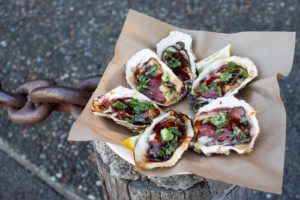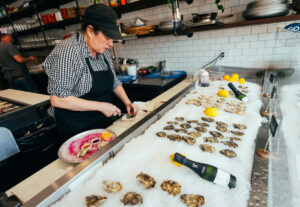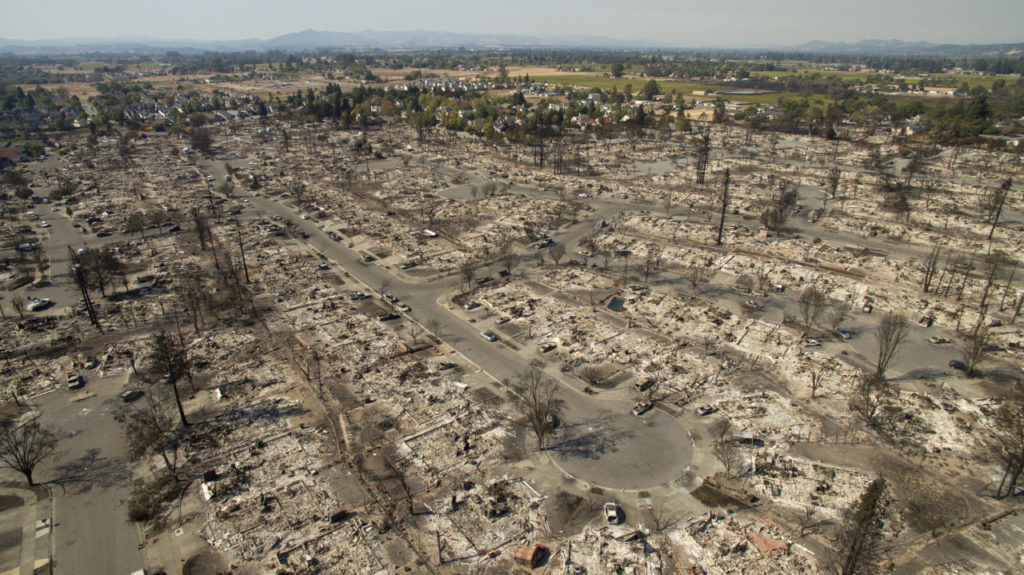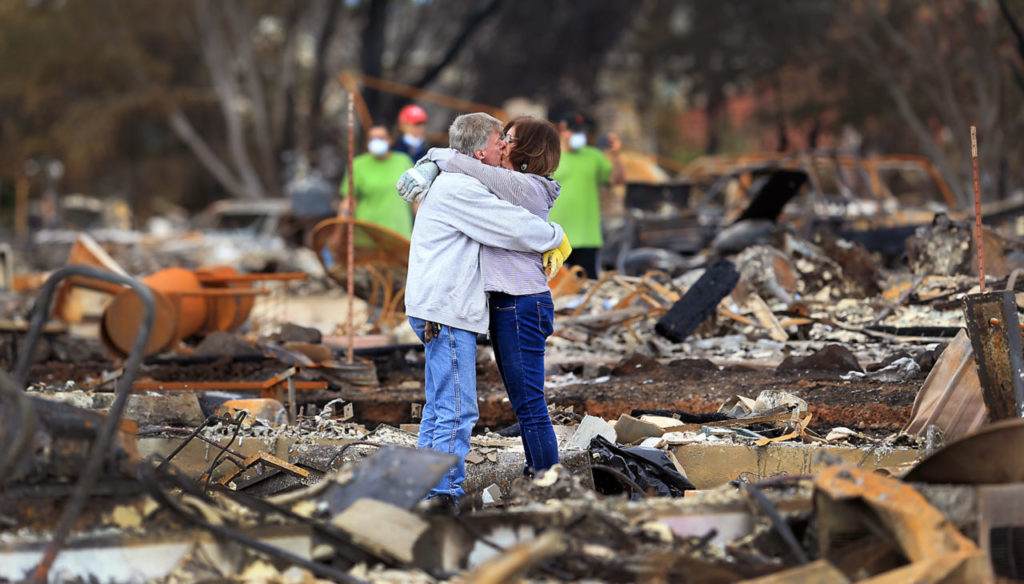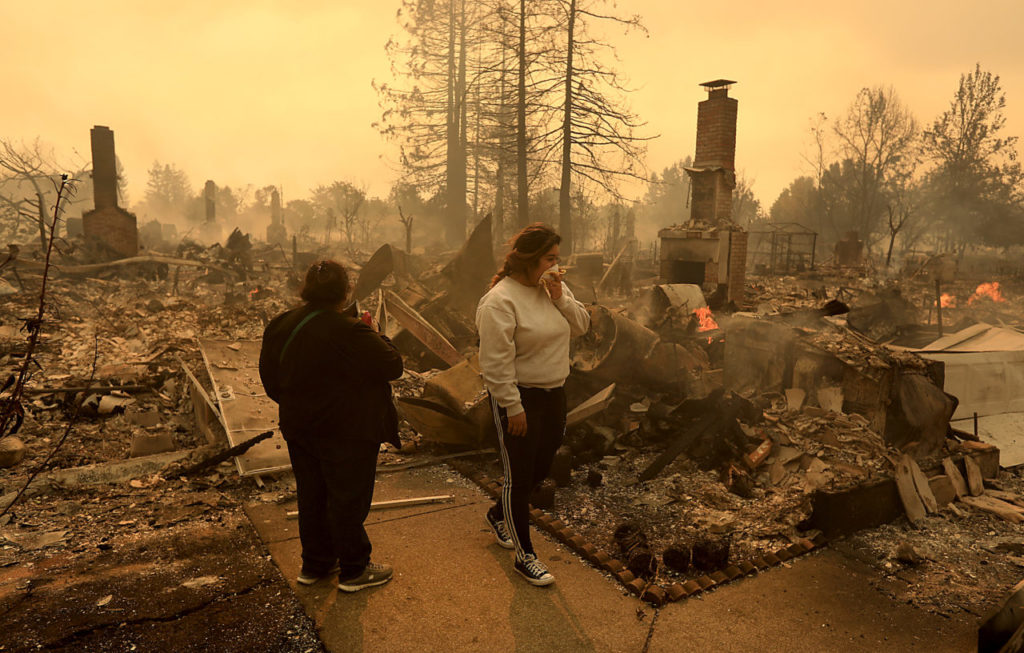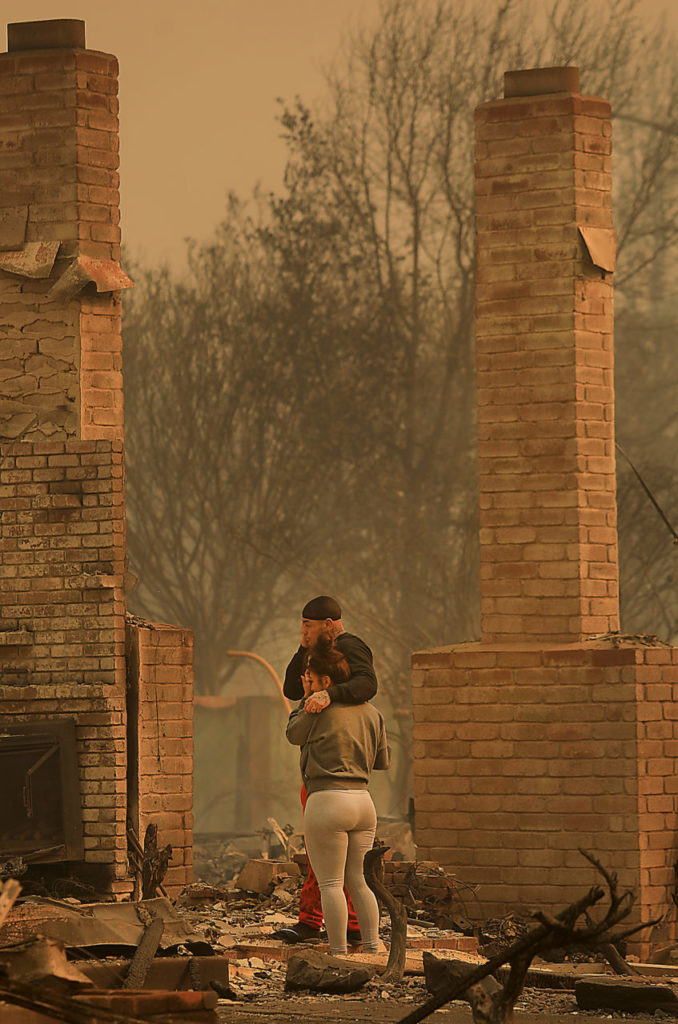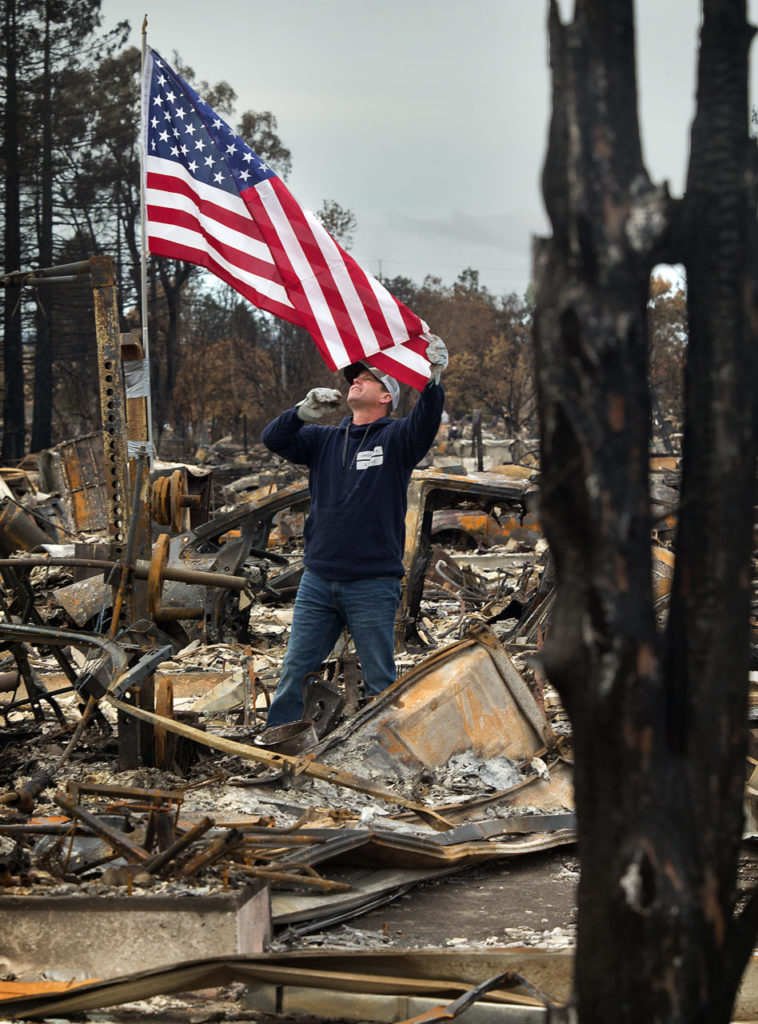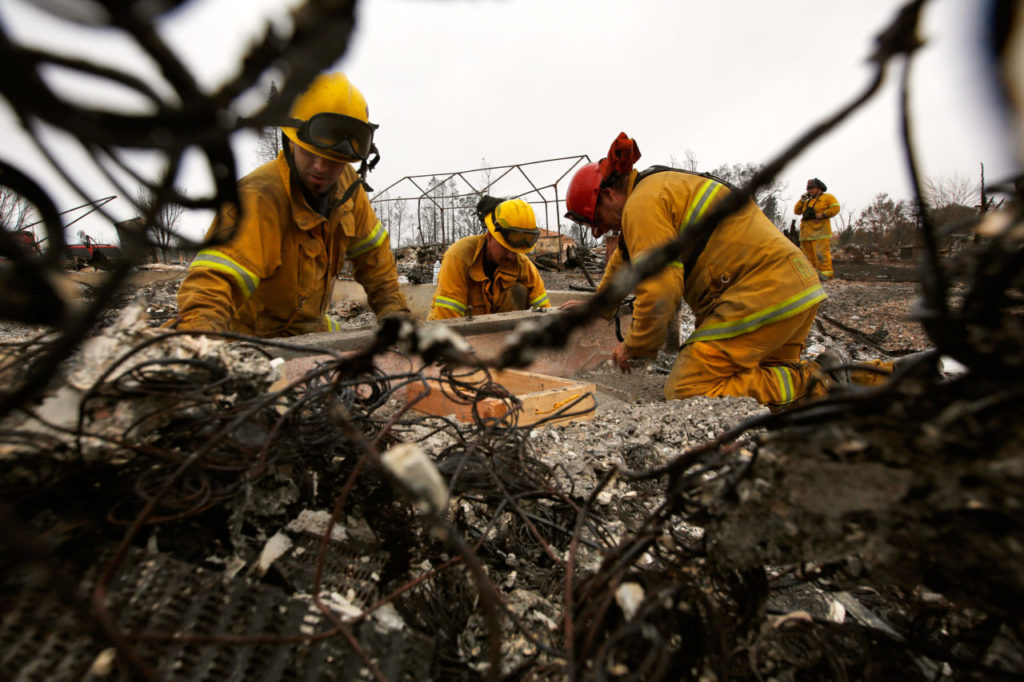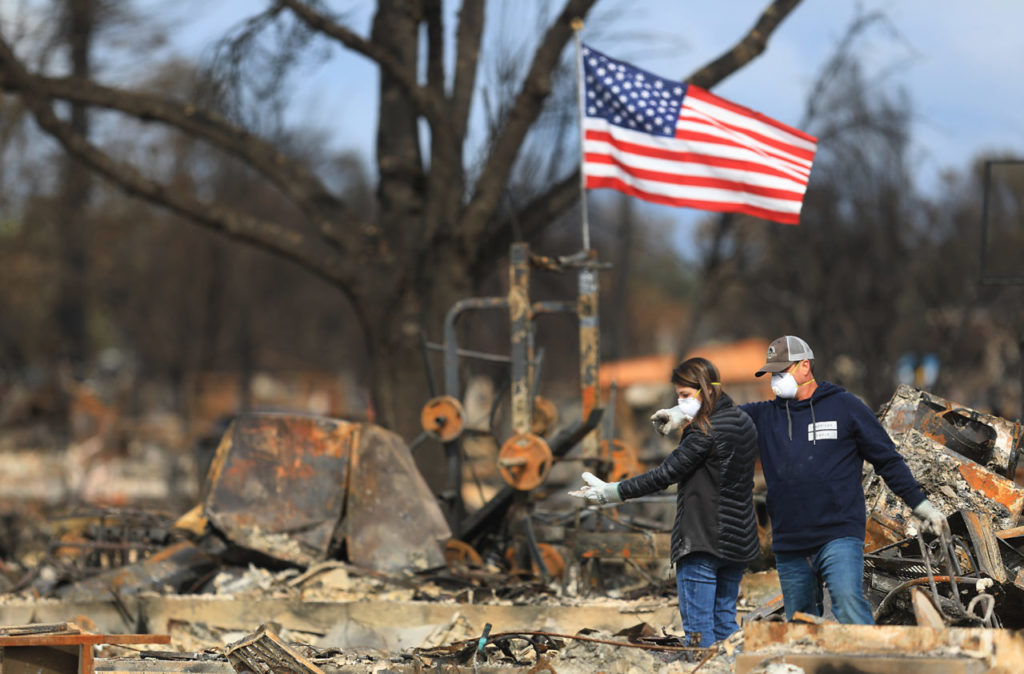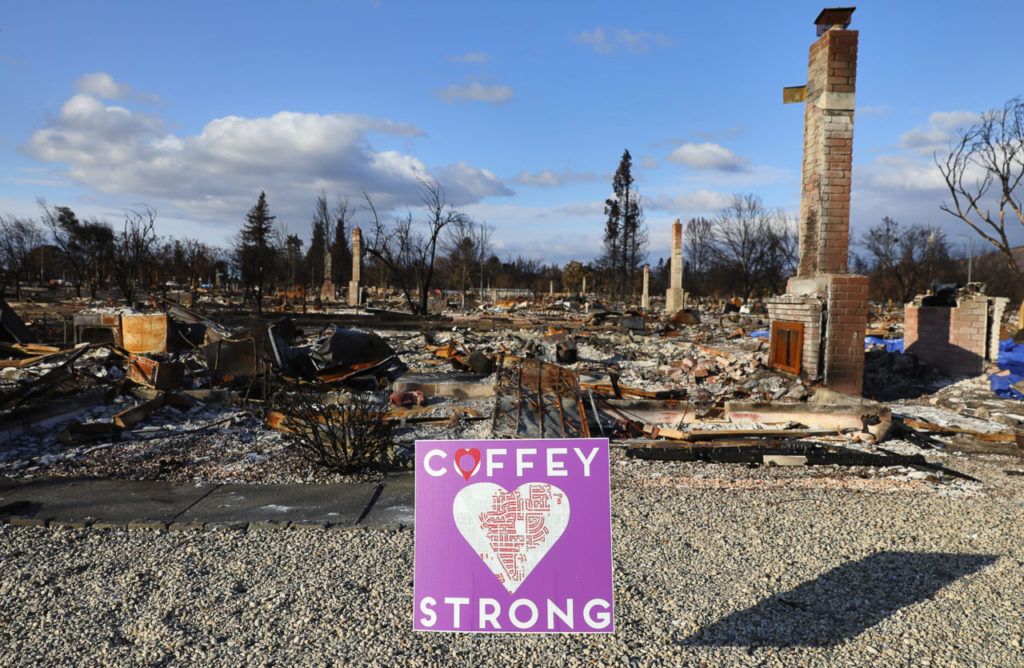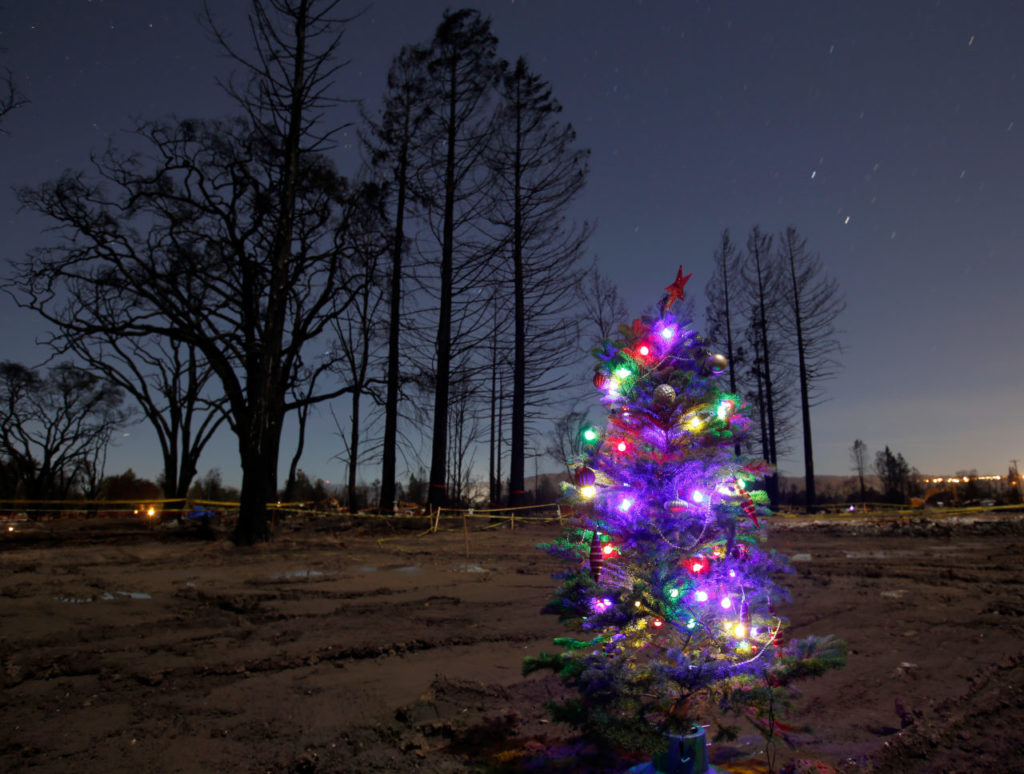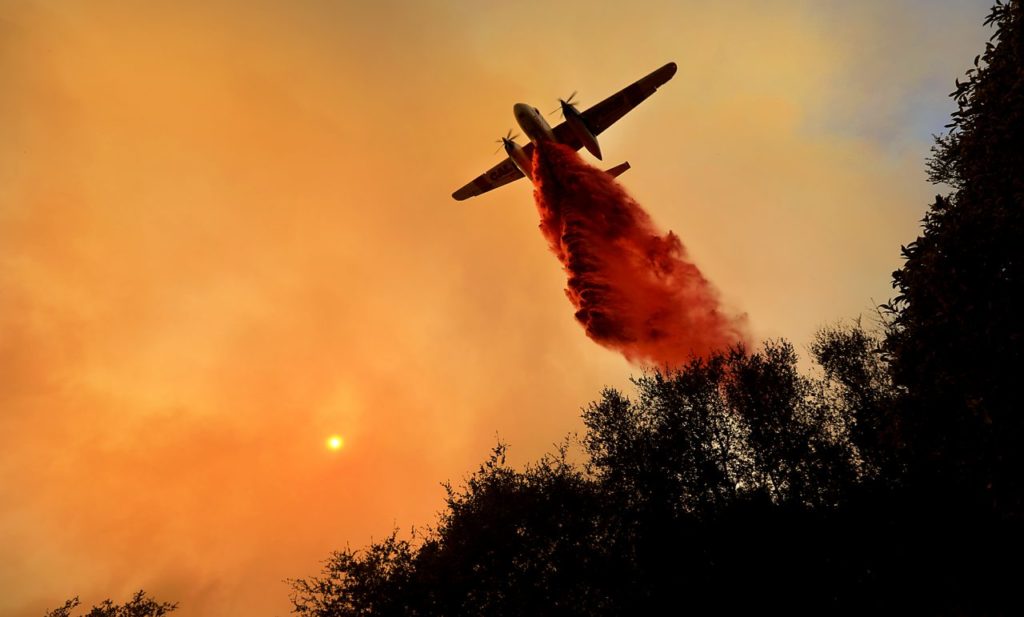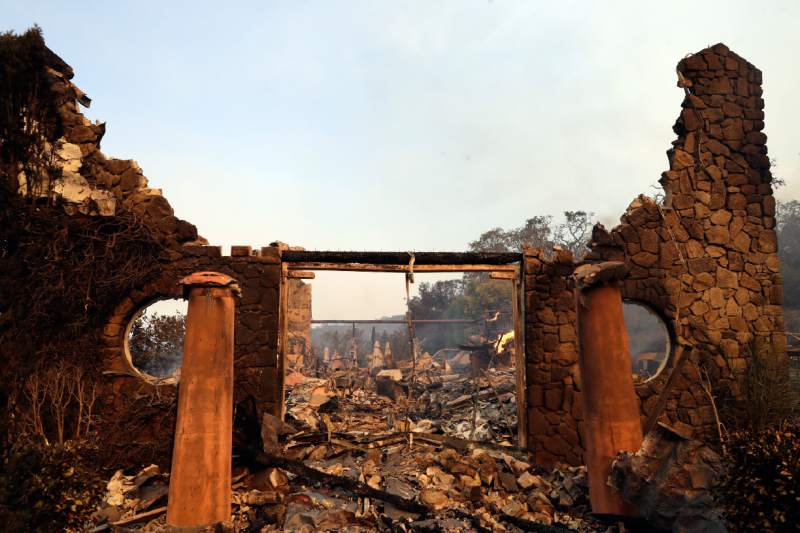For a national audience, they were often called the “Wine Country fires” and accompanied by images heavy on flames and smoke threatening the vineyard idyll. But Santa Rosa’s Coffey Park neighborhood is a stark reminder that the fire burned across class lines.
Aerial photos of Coffey Park’s 1,347 homes reduced to ash say it all — the it-could-happen-anywhere destruction of a typical American suburb, relatable to everyone in the country. In the week after the fire, drone footage of postal service trucks delivering mail to Coffey Park’s burned-down houses dominated Facebook feeds, and story after story poured in from residents who lost everything.
Coffey Park was a close-knit community, one square mile in all, bounded to the west by farmland, to the east by Highway 101. Most of its two- and three-bedroom houses were built from the same handful of blueprints copied and flipped and replicated, over and over, to cut costs for first-time homebuyers. Living in them were families from diverse ethnic backgrounds — white, Latino, Vietnamese, black, Filipino, American Indian.
And while the neighborhood was often referred to in news reports as working class, Coffey Park’s history shows a demographic climbing the rungs of the economic ladder. To know just how deep those hard-working middle-class roots run, one only has to go back to the 1980s, when much of the neighborhood was built.
Growing up in Coffey Park back then meant going to Kmart, which shared its giant building with a discount grocery store, Rainbow Foods. Both catered to lower incomes — particularly the Kmart in those days, with a robust layaway counter and a cheap cafeteria with brown plastic paneling. On weekends, your family ate at The Big Yellow House, a restaurant behind Kmart with a simple menu served both upstairs and downstairs.
To the north sat one of the area’s first McDonald’s restaurants, with seating for kids inside a giant plastic train car, and to the south sat Polynesian Village, a restaurant with a live hula show. Farther south stood the two-story King’s Office Supplies, selling staplers and three-ring binders — and even offering typewriter repair — before Office Depot came to town.
Repairing instead of replacing was a way for Coffey Park families to save money at Asien’s Appliance in the 1980s (still open today), right at the entrance to the neighborhood on Piner Road.
Just across the intersection stood the ultimate in cost-cutting retail: Bare Woods, a furniture store that sold unfinished, stain-it-yourself tables and chairs for those willing to try their hand at a paintbrush to save a buck or two.
Around the perimeter of Coffey Park, the area’s agricultural past still lingered. During pie season, one of your neighbors on the edge of the neighborhood might let you pick apples from their backyard orchard. Your mom might even send you out to the walnut trees on Piner Road to scoop up fallen fruit. At the end of Coffey Lane, you’d sometimes sneak onto the old farm equipment in the field, pretending to drive the tractors. Other kids used farm culture against you as an insult: You went to Comstock for junior high, and then to Piner, which everyone else in town called “the hick school.”
You didn’t have money for movies or the mall, so you’d rely on cheap thrills. That often meant riding your skateboard all day at the “Chicken Ditch,” a culvert of banked concrete across from Kentucky Fried Chicken. In the late summer when the tall grass turned to dry weeds, you and your friends would lift large sheets of cardboard from the dumpsters of B& L Glass to sled down the embankment at the Bicentennial Way overpass. Or you’d hitch a ride with an older sibling’s friend, and then go out to Barnes Road and drive the long, open, empty stretch at about 70 mph in the completely irresponsible time-honored high school drag-race tradition. (If you were brave, you’d continue onto San Miguel Drive, where a steep incline in the asphalt at the street’s railroad tracks would launch cars into the air.)
Of course, well before the fire, things had changed since those years when Coffey Park was built. Shakey’s Pizza, where you’d saved your quarters to play video games, got shuttered — as did the long-forgotten Taco Time next door, which sold 79-cent tater tots cleverly renamed “Mexi-Fries.” And Skool Daze — the former school-supply store where teachers bought pencils and chalk for class — turned into a gun and ammunition store.
Now, things have changed in ways we never expected. Coffey Park is a face of fires that did the unthinkable, leaping over Highway 101 and leveling a whole community. The cleanup here has begun and soon the rebuilding. Coffey Park will return.
There’s something in the soil here, an authenticity and no-nonsense approach to the everyday needs and concerns of Santa Rosans. Whatever it’s called, it can’t be taken away.






